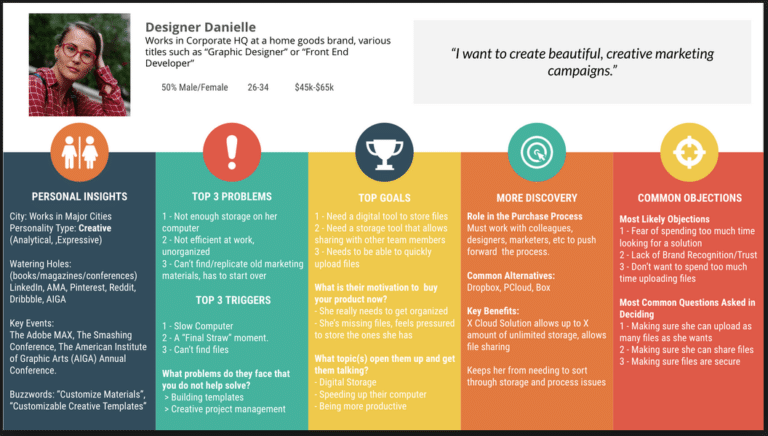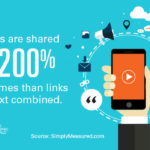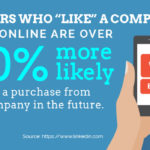Want to know about a business marketing principle that directly impacts your conversions? Let’s talk about how to identify and market to your target audience. This post covers concrete steps business owners can take to identify their core audience and create an effective marketing plan.
What Is a Target Audience?
Audience research is important to all facets of marketing, including creation, promotion and optimization. Extensive audience research helps you create engaging content for your target market. Also important is to realize that audience research and market research will help you identify your target audience’s pain points, which is crucial to resonating with your audience. Your target audience consists of the specific group or groups of people most likely to purchase your product or service.
When you identify your target audience you can tailor your marketing materials and messages to resonate with people who are most likely to buy from you. This means you can develop an in-depth marketing strategy, including content, social and SEO marketing.
SEO research can help businesses identify audience behaviors, which is important for understanding what your target audience is looking for. To identify your target audience, you will take into account numerous factors regarding those most likely to interact with your brand. Such factors include everything from age to location to income and even hobbies.
It is important to note that there are two types of audiences: primary and secondary. The primary audience consists of the decision makers. These are the people who receive your marketing messages directly. The secondary audience consists of those who indirectly receive your marketing messages. More specifically, those who receive the marketing messages and have influence over the decision maker.
It is also important to understand the difference between a niche and target audience. Your target audience is the group of people you cater your products or services to. Your niche is not an audience, but rather the area in which you specialize.
A good way to understand the difference is to look at a company that caters to the same target audience but provides a different service or product than what you offer. For example, your company and Company XYZ may both sell to the same target market, but you sell whiteboard animations while Company XYZ sells print design. This means you both have the same target audience but a different niche.
Identify Your Target Audience and Market to Them
The best way to identify your target audience is to create a buyer persona. According to the Buyer Persona Institute:
“A buyer persona tells you what prospective customers are thinking and doing as they weigh their options to address a problem that your company resolves. Much more than a one-dimensional profile of the people you need to influence or a map of their journey, actionable buyer personas reveal insights about your buyers’ decisions — the specific attitudes, concerns and criteria that drive prospective customers to choose you, your competitor or the status quo.
A buyer persona is not merely a description of your buyer. As hundreds of our partners and customers can tell you, simply profiling your buyer results in too many personas and not nearly enough marketing guidance.”
To create a buyer persona, check out the template below:
Below is a buyer persona that’s even more detailed than the one above. Notice how the one below has different tabs at the top. Each tab provides greater detail on the target audience.
One of the most important parts of creating a buyer persona is understanding your target audience’s pain points. With a deep understanding of these pain points, it becomes possible to create marketing messages that show the audience you can help them overcome those barriers and challenges. Just because you offer an amazing product doesn’t mean people are going to rush to purchase it. Only those who have a need for the product will actually buy it. By pinpointing pain points, you get a much better understanding of who needs your product the most.
Another way to identify your target audience is to survey and research current customers. This can help you establish a foundational database of who you’ve targeted already and how your service or goods have served them. Insights can be drawn later to help capture more customers and maintain and increase customer satisfaction.
You’ll also want to research your competitors. In fact, your competitors are one of your most valuable assets when identifying your target audience. You can mimic what the competitors are doing right to reach your target audience as well as find holes in their marketing. You can fill these holes through effective online marketing to better reach your target audience and increase conversions.
Tailoring Your Marketing Plan for Your Audience
Once you thoroughly understand your target audience, it’s time to put your buyer persona into action. You can start by reallocating your ad spending and refining your marketing budget. Look at the channels where your audience is most likely to be found and devote your ad spending toward those outlets. You can also use the buyer persona to better allocate your human resources. Let’s say you discover that the majority of your audience is on LinkedIn. This means you should create a team of social media marketing professionals who specialize in LinkedIn marketing.
Another way to use your buyer persona as part of a content marketing strategy to reach your target audience is by retargeting video ads via list segmentation. For more on this form of marketing, check out our article on Retargeting Video Ads on Facebook: The How and Why. Just remember, a buyer persona is always crucial to effectively promoting content.
Writing a ebooks and blog posts with your buyer persona in mind are two additional ways to reach your target audience. Need even more ideas? Check out the list below:
- Create a video with your buyer persona in mind
- Refresh your existing content with your target audience in mind
- Create blog posts for your persona based on different parts of the sales funnel
- Optimize landing pages for personas
- Optimize meta descriptions and image alt tags for personas
- Use dynamic content specifically tailored to your personas
- Segment out your negative personas
Identifying your target audience takes a lot of work and a lot of time. However, it’s definitely worth the results you can achieve.








